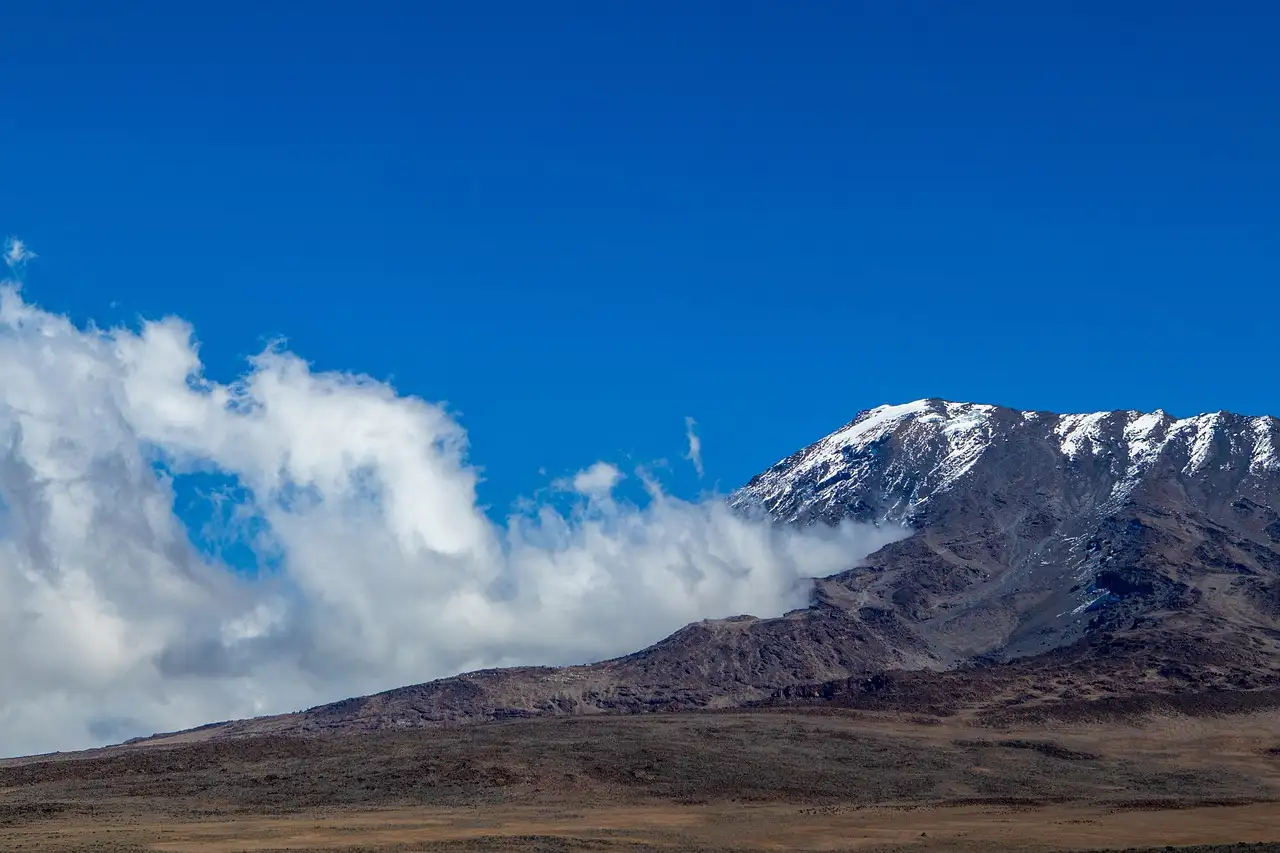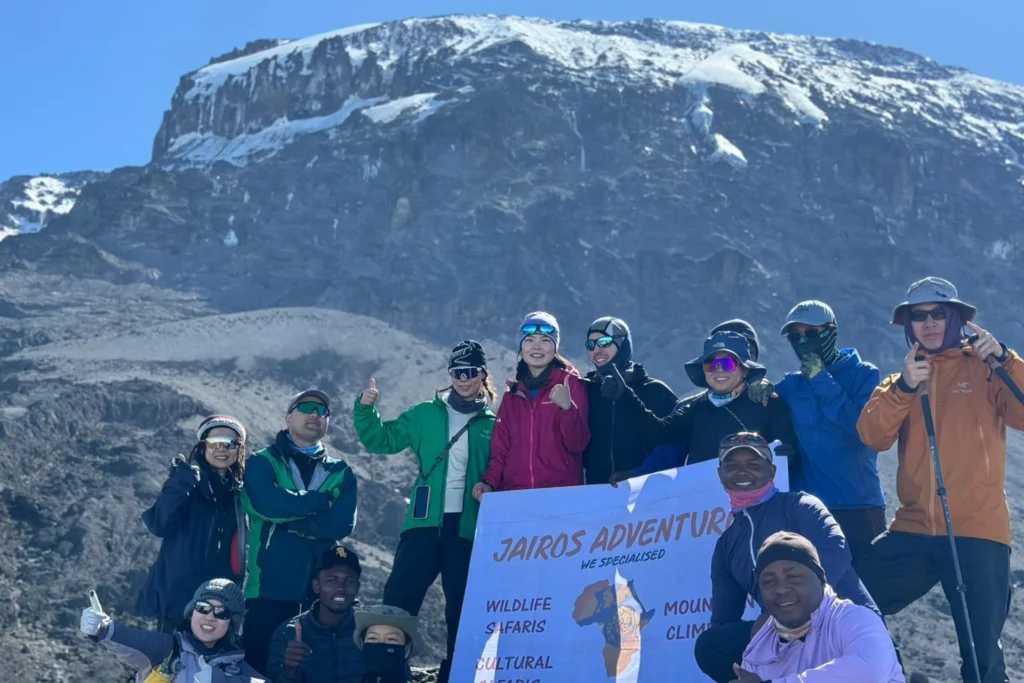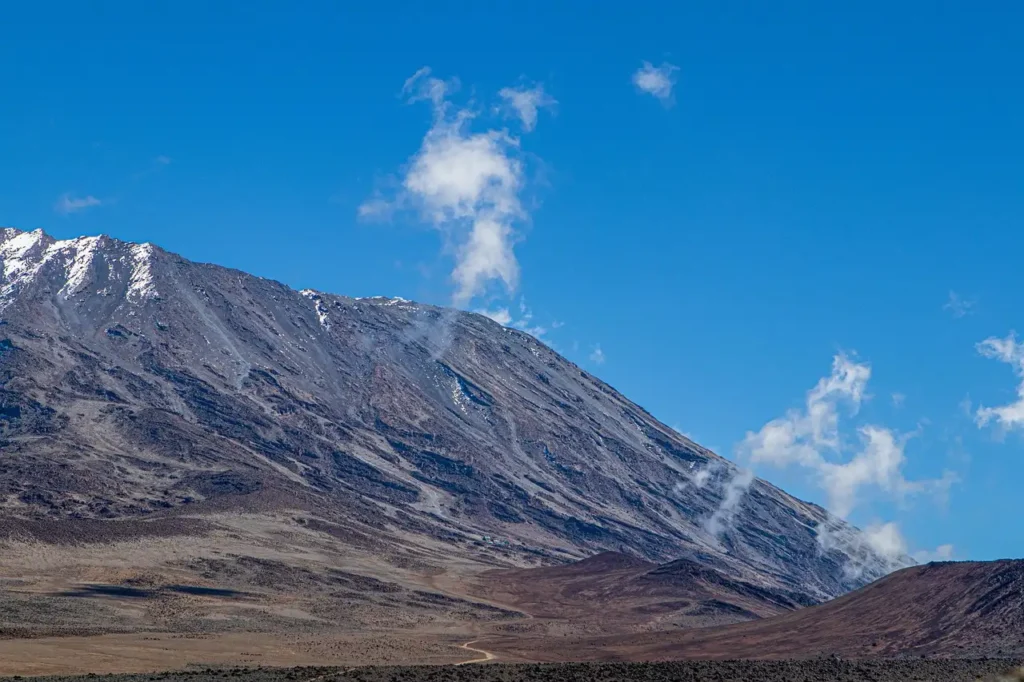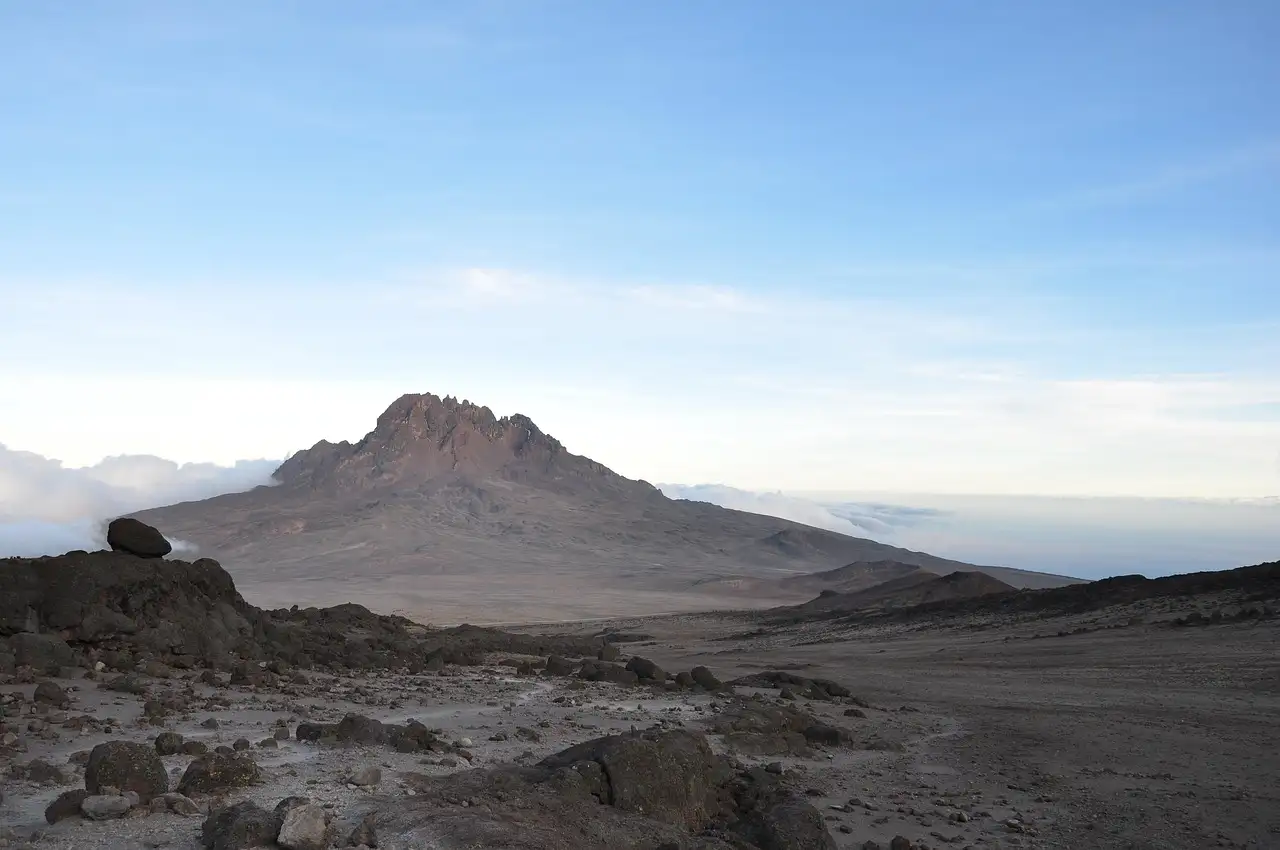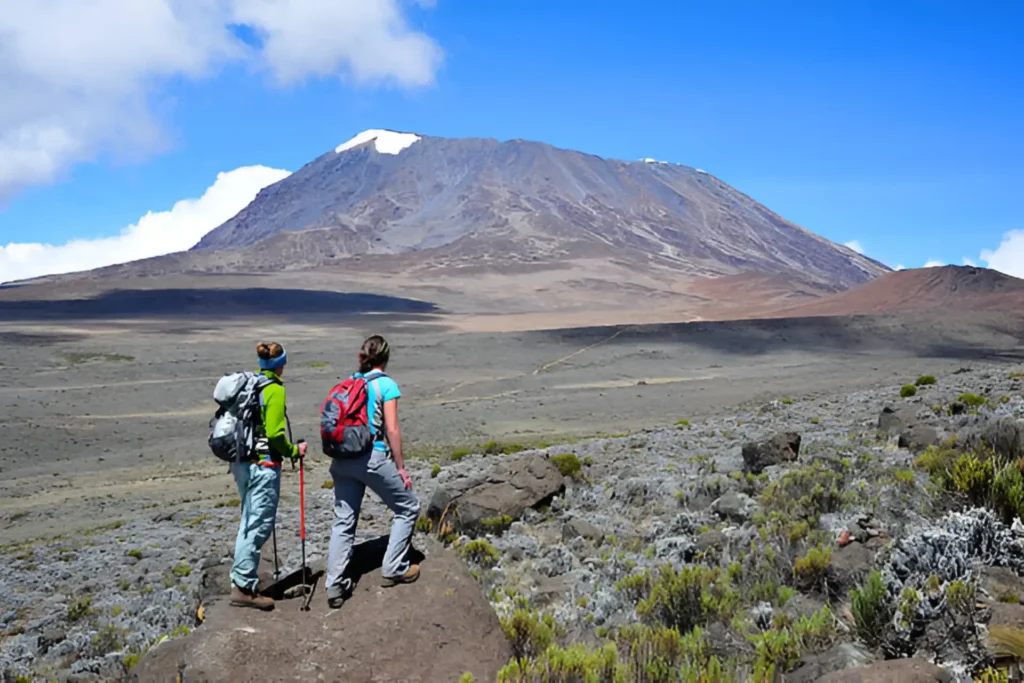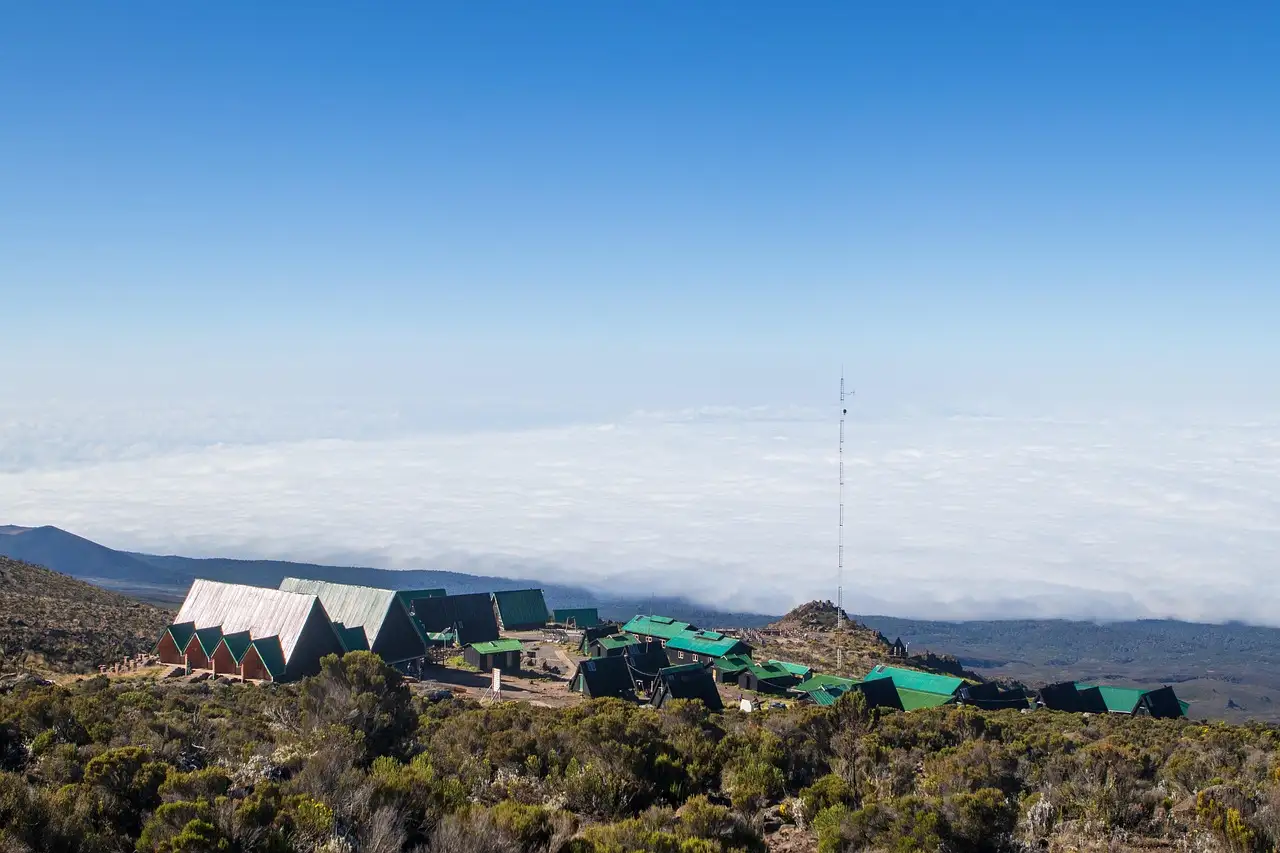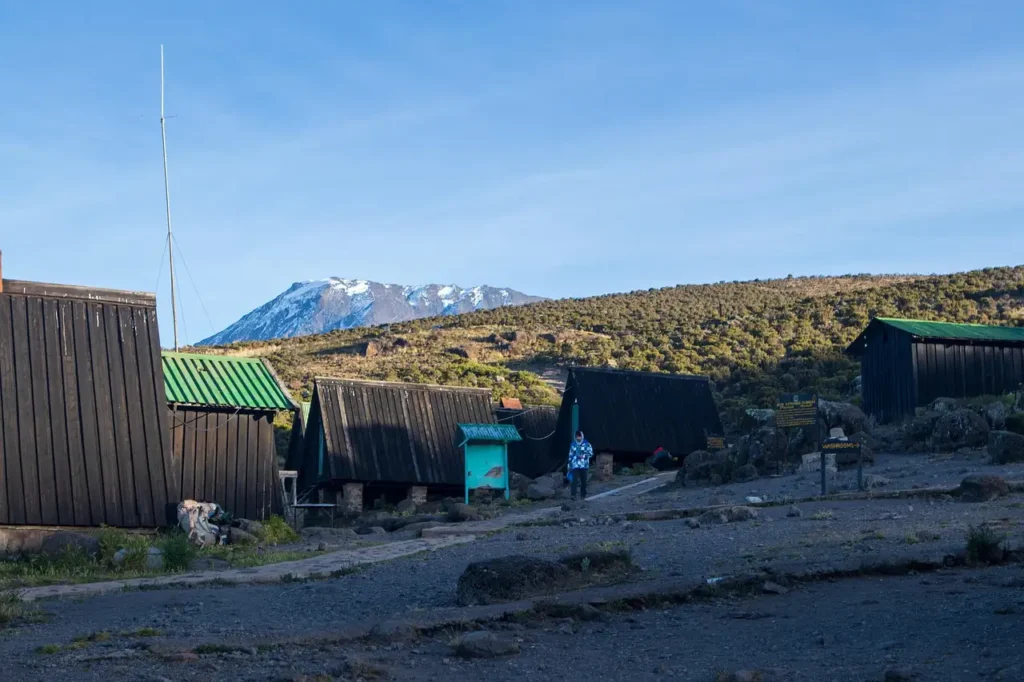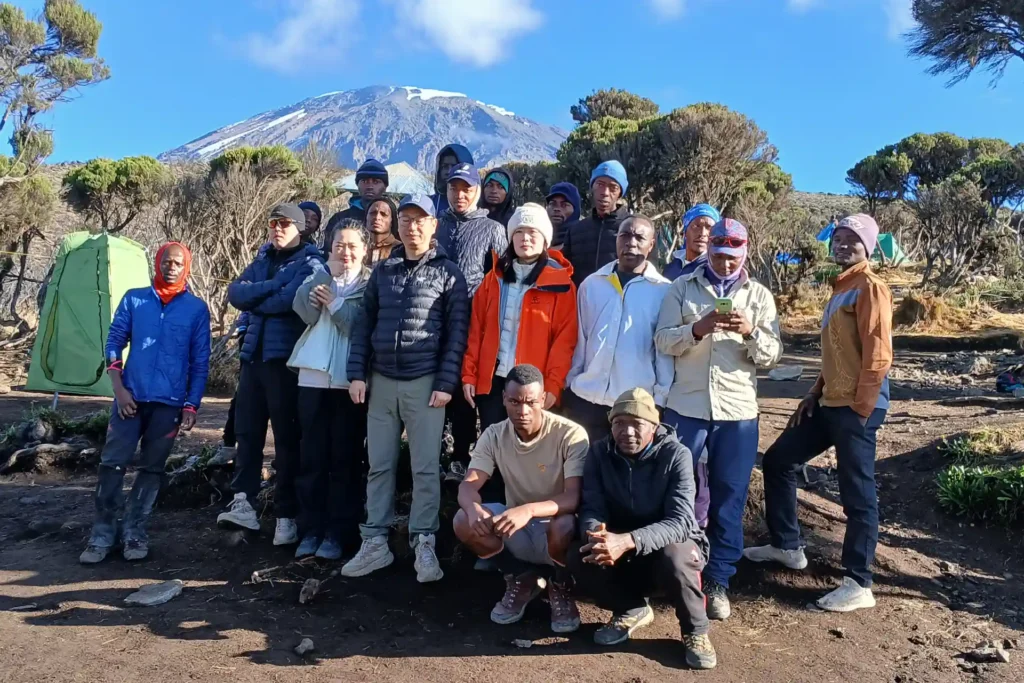Ultimate Guide to Climbing Mount Kilimanjaro
Best Routes, Prices & Preparation Guide To Tanzania Kilimanjaro
Why Climb Mount Kilimanjaro?
So, why choose Mount Kilimanjaro over Everest, the Rockies, or the Himalayas?
Because Tanzania Kilimanjaro is unlike any other. Towering at 19,341 feet, Mount Kilimanjaro peak stands as the highest point in Africa and the tallest free-standing mountain on Earth. But the real magic? You don’t need to be a mountaineer to summit this legendary Mount Kilimanjaro . No ice axes, no ropes—just your resolve, some preparation, and sturdy boots.
Climbing Mount Kilimanjaro isn’t just about altitude. It’s a full-blown adventure—an ascent through the heart of Kilimanjaro, where landscapes shift like scenes from a dream. From vibrant rainforests to alpine meadows, across volcanic terrain to a stark, icy crown—you’ll witness Earth’s diversity unfold with every step. The journey to the top of Mount Kilimanjaro isn’t just physical. It’s a soul-stirring passage into nature, culture, and inner strength.
So if you’re looking for more than a mountain, Kilimanjaro delivers. It’s not just about reaching the Kilimanjaro peak. It’s about discovering who you are on the way up.
Best Time to Climb Kilimanjaro
Timing your climb right can make a big difference not just in the views, but in your overall experience.
Dry Season (January–March & June–October)
These are the most popular and recommended times to climb. Why? Because the weather tends to be stable clear skies, less rain, and milder conditions.
- January to March: Quieter on the mountain, with good chances of snow at the summit. A great choice if you want fewer crowds and don’t mind a bit of cold at the top.
- June to October: Peak season with amazing visibility and warm days (especially lower down). But it’s also the busiest time expect more fellow trekkers.
Wet Season (April–May & November)
These months are considered the rainy seasons. Trails can be muddy, slippery, and visibility is limited, which means fewer views and more soggy socks.
- April–May: Long rains. Best to avoid unless you’re very experienced and well-prepared for wet, chilly conditions.
- November: Short rains. Slightly better than April–May but still not ideal for most climbers.
Pro Tip: Want a sweet spot with fewer crowds and decent weather? Aim for late January or early September.
Best Kilimanjaro Climbing Routes: What to Know Before You Climb
Planning to climb Mount Kilimanjaro? Choosing the right route can make all the difference between a tough challenge and a life-changing adventure. With several routes to the summit, each route offering its own way, difficulty, and experience, it’s important to understand what sets them apart. If you’re looking for the most unique and beautiful views, the highest success rate, or a quieter trail with fewer crowds, this guide breaks down what you need to know before you start your climb.
Acclimatization and Altitude Sickness
What is Altitude Sickness?
Altitude sickness, also known as Acute Mountain Sickness (AMS), occurs when your body struggles to adjust to the lower oxygen levels found at high elevations. It’s important to understand that no matter how fit or experienced you are, anyone can develop AMS, so being aware of the symptoms and prevention is essential.
Recognizing the Symptoms
Common symptoms include headaches, nausea, dizziness, shortness of breath, and difficulty sleeping. If you experience any of these, it’s a sign that your body needs more time to adjust.
Tips for Proper Acclimatization
To reduce the risk of AMS, the key is to take it slow, often summarized by the Swahili phrase “pole-pole,” meaning “slowly, slowly.” Choosing longer trekking routes that last seven days or more helps your body acclimatize gradually. Staying well-hydrated by drinking 3 to 4 liters of water daily is also very important, while avoiding alcohol and caffeine, which can cause dehydration.
Communicate with Your Guide
Always communicate openly with your guide if you start to feel symptoms. Guides are trained to recognize altitude sickness and can help you manage it safely, including recommending rest or descent if necessary. Proper acclimatization is the best way to enjoy a safe and successful climb.
Kilimanjaro Packing List
Packing for Kilimanjaro is all about being prepared for a wide range of weather and conditions. From hot rainforest hikes to freezing summit nights, having the right gear can make your climb safer and much more comfortable. This list covers everything you’ll need, from clothing layers to essential gear, so you can focus on enjoying the adventure ahead.
Why Packing Right Matters
Having the right gear can make or break your climb. Proper clothing, footwear, and essentials will keep you comfortable, safe, and prepared for Kilimanjaro’s changing conditions.
Clothing Layers
Dress in layers to handle Kilimanjaro’s wide temperature changes. Start with a base layer of thermal long-sleeve tops and bottoms to keep moisture away from your skin. Add a mid-layer like fleece or wool for warmth and insulation. Your outer layer should be a waterproof and windproof shell to protect against rain and wind. Don’t forget a heavy summit layer; a down jacket is essential for the cold air near the top.
Footwear and Accessories
Bring sturdy, broken-in trekking boots that support your ankles and handle rough terrain. Pack 3 to 4 pairs of wool socks to keep your feet dry and warm. Camp shoes or sandals are great to wear at camp for comfort. Also include gloves, a warm beanie, a sunhat, and a balaclava to protect your face. UV sunglasses and a reliable headlamp are must-haves.
Daypack Essentials
A 30 to 35-liter daypack is perfect for carrying daily necessities. Include a water bladder, like a Camelback, or bottles to stay hydrated. Pack high-energy snacks such as trail mix and energy bars to keep your energy up. Don’t forget sunscreen, lip balm, and tissues for sun and wind protection.
Sleeping and Hygiene Gear
You’ll need a 4-season sleeping bag rated to at least -10°C (14°F) to stay warm on chilly nights. Bring a travel towel, biodegradable wipes, and a toothbrush for hygiene. A personal first aid kit is important for minor injuries or illnesses. Also, consider a power bank and solar charger to keep your electronics charged during the trek.
Fitness Requirements and Training Plan
Climbing Kilimanjaro doesn’t require technical climbing skills or ropes, but you will be hiking for 6 to 8 hours each day, often at high altitude, where the air is thinner. Preparing your body ahead of time is key to making the climb easier and increasing your chances of reaching the summit. This section will guide you through a simple training plan to help build the stamina and strength you’ll need for the trek.
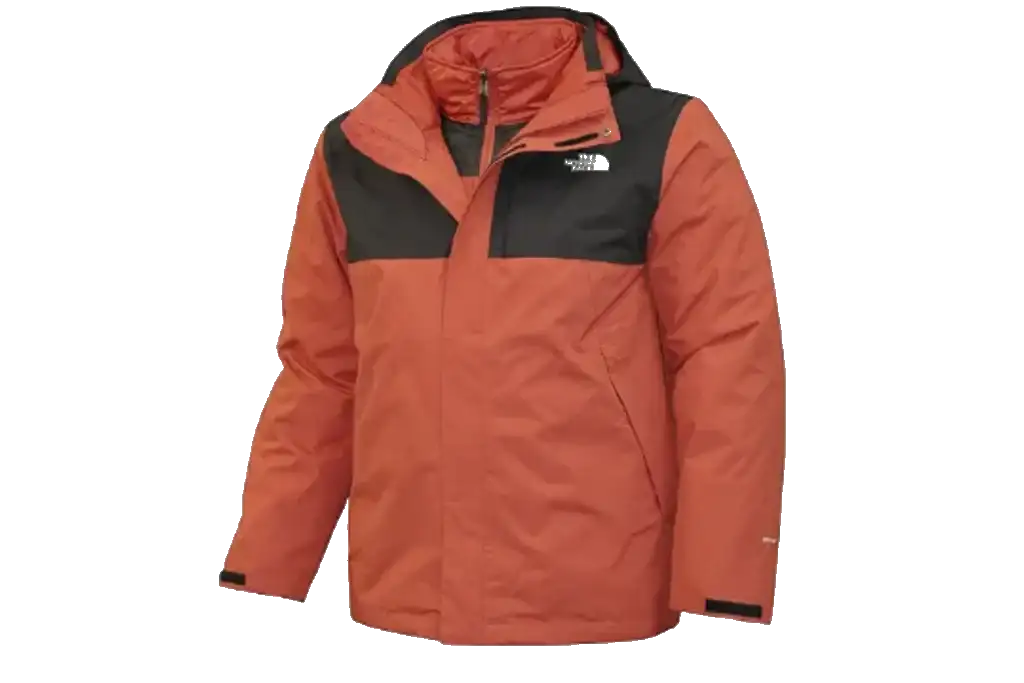

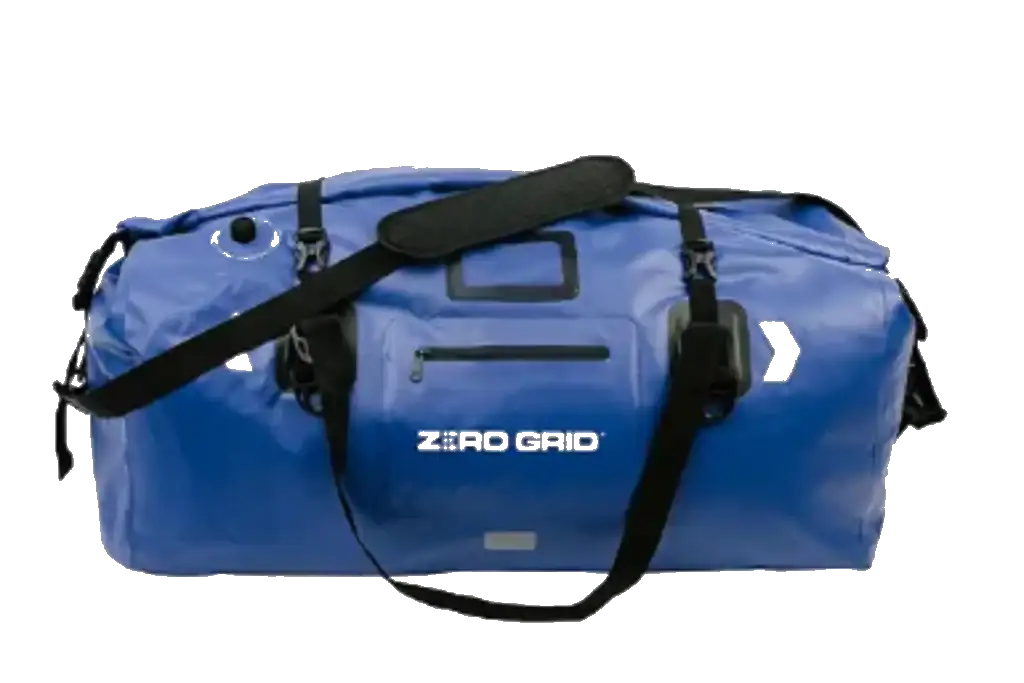
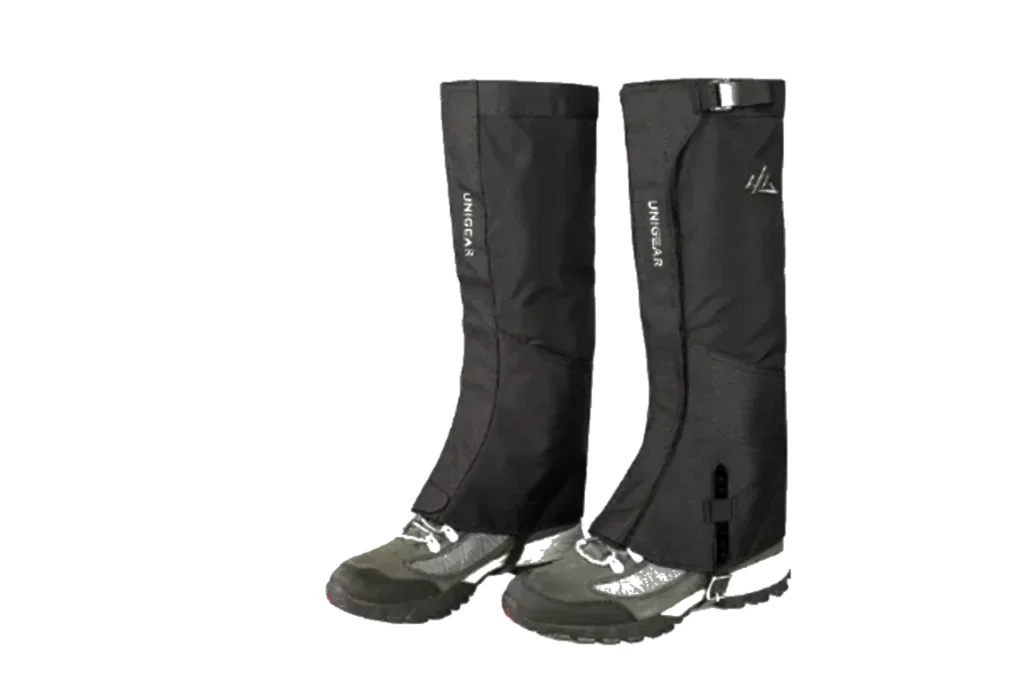
Cost to Climb Mount Kilimanjaro in 2025
General Mount Kilimanjaro prices vary depending on the number of days, group size, service level (basic to luxury), and season, but here’s a helpful estimate based on standard group/shared treks (not private or luxury):
Kilimanjaro Routes – Price Estimates (per person, in USD)
Rank | Route | Days | Description | Price Range (USD) |
|---|---|---|---|---|
1 | Marangu Route | 5-6 | Only hut accommodation, easiest logistics | $1,500 – $2,500 |
2 | Machame Route | 6–7 | Popular, scenic, and great acclimatization | $1,600 – $2,800 |
3 | Rongai Route | 6-7 | Quieter, approaches from the north | $1,700 – $2,900 |
4 | Lemosho Route | 7–8 | Very scenic, high success rate | $1,800 – $3,600 |
5 | Northern Circuit | 8–9 | Longest and quietest, excellent acclimatization | $2,300 – $5,500 |
6 | Umbwe Route | 6–7 | Steep, challenging, less used | $1,700 – $3,500 |
Extra Costs to Watch
When planning your Kilimanjaro adventure, it’s important to budget not just for the trek itself but also for extra expenses that can add up. Things like tipping your guides ($250–$400), flights ($800–$1,200), visas ($50 – $100), insurance ($100–$200), and any last-minute gear or vaccinations all come with their own costs. Being aware of these ahead of time helps you avoid surprises and ensures a smoother trip overall.
Crew and Support Team
Climbing Kilimanjaro is a team effort, and you’ll be supported by a dedicated crew throughout your journey. This usually includes one lead guide who knows the mountain inside out, two to three porters who carry your gear and supplies, and a cook who prepares your meals at camp. Getting to know your team helps you appreciate the hard work behind the scenes that makes your climb possible and enjoyable.
Health and Safety on the Mountain
Your health is key on Kilimanjaro, and it starts with vaccinations. Make sure you’re protected against Yellow Fever (required if traveling through affected countries), Hepatitis A and B, Typhoid, and Tetanus. Once on the mountain, many guides perform daily health checks, including pulse oximeter readings to monitor oxygen levels. Reputable tour companies carry oxygen tanks and stretchers in case of emergency. Some hikers choose to take Diamox, a medication that helps prevent altitude sickness. Just be sure to consult your doctor first.
Daily Trekking Journey: What to Expect Each Day
Climbing Kilimanjaro takes you through five distinct ecological zones. Days 1–2 take you through the lush Rainforest Zone (1,800–2,800m), rich in moisture and wildlife. Days 3–4 move into the Moorland Zone (2,800–3,900m), where the landscape opens up into rocky trails and strange, hardy plants. On days 5–6, you’ll climb through the barren Alpine Desert (3,900–4,800m), with colder, windier air. Summit night, often starting around midnight is a tough but unforgettable push through the Arctic Zone to reach Uhuru Peak at 5,895m. After that comes the descent and your triumphant exit. Most days involve 5–7 hours of hiking, but summit night can stretch up to 14 hours. It’s demanding—but deeply rewarding.
Tips for a Successful Summit
Your mindset and daily habits make all the difference. Go pole-pole, means slowly, slowly to let your body adjust to the altitude. Keep eating, even if you lose your appetite, and drink water constantly. Wear boots that are already broken in to avoid painful blisters. Most importantly, trust your guide, they’ve done this before and know how to get you to the top safely. And remember: reaching the summit starts in your head. Stay positive, stay focused.
Responsible Trekking & Sustainability
Being a thoughtful trekker goes a long way. Choose tour operators who follow Leave No Trace principles, treat their porters well, reduce single-use plastics, and show respect for local wildlife and communities. Your choices matter, they help protect Kilimanjaro for future generations.
After the Climb: What to Do in Tanzania
Your journey doesn’t have to end at the summit. You can choose to go on a Tanzania safari tour in the Serengeti or Ngorongoro Crater, where you can see all the Big Five and the Great Wildebeest Migration. Wake up to the sun and salt air on Zanzibar’s beaches, or dive into culture with a visit to Maasai Village tribes and Hadzabe People, or Moshi to meet the local Chagga people. Tanzania has so much more to offer; keep exploring.
Our Professional Advice
Climbing Mount Kilimanjaro is more than just a physical challenge; it’s a life-affirming journey. With the right planning, mindset, and respect for the mountain and those who support you, it’s absolutely within reach. That summit photo? It’s more than just proof you made it, it’s a badge of determination, growth, and awe. Ready to take the first step toward Africa’s tallest peak?
Need any help with Safari planning?
Get Your Custom Quote
Lemosho Route: Detailed Guide to Climbing Kilimanjaro
Introduction
The Lemosho Route is one of the most beautiful, popular, and highly recommended routes to climb Mount Kilimanjaro. It is loved because of its stunning scenery, quiet trails at the beginning, and high success rate of reaching the summit.
Unlike some shorter routes, the Lemosho Route gives climbers more days to adapt to the altitude. This makes it safer and increases the chance of success. If you want the perfect mix of nature, adventure, and a higher chance to stand on Uhuru Peak (5,895m), the Lemosho Route is an excellent choice.
Why Choose the Lemosho Route?
The Lemosho Route is often considered one of the best options for climbing Mount Kilimanjaro because it combines beauty, comfort, and a high chance of success. The route takes trekkers through diverse landscapes, beginning in the lush rainforest, continuing into the heather and moorland, across the vast alpine desert, and finally into the icy arctic zone near the summit. Its longer itinerary allows climbers to adjust gradually to the altitude, which greatly improves safety and increases the summit success rate.
Compared to more popular trails such as the Machame Route, Lemosho is quieter at the beginning, offering a more peaceful and less crowded experience. It also provides opportunities to encounter wildlife in the lower forest zone, including monkeys, exotic birds, and other species. With a balance of adventure and manageable difficulty, the Lemosho Route is suitable for both first-time climbers and those with previous trekking experience.
Quick Facts About the Lemosho Route
The Lemosho Route begins at Londorossi Gate on the western side of Kilimanjaro and finishes at Mweka Gate in the south. The journey typically takes between seven and eight days, with the eight-day version strongly recommended for better acclimatization. Covering approximately 70 kilometers (43 miles), the route requires no technical climbing skills, but a good level of fitness and stamina are necessary. The overall difficulty is considered medium, making it accessible to a wide range of trekkers. Summit success rates are among the highest of all Kilimanjaro routes, averaging 90–95% on the eight-day climb and about 85–90% on the seven-day climb. These factors make the Lemosho Route one of the most reliable and rewarding choices for reaching the highest point in Africa.
Lemosho Route Itinerary
Best Time to Climb the Lemosho Route
Mount Kilimanjaro can be climbed at any time of year, but the Lemosho Route is best experienced during the dry seasons when the weather is most favorable. From January to March, climbers enjoy warm temperatures, clear skies, and fewer crowds, making it an excellent choice for those seeking a quieter trek. The period from June to October is considered the peak climbing season. Conditions are cool, dry, and stable, which makes it the busiest time on the mountain, but also the most reliable for summit success.
On the other hand, it is generally recommended to avoid April to May and November, which are the rainy seasons. During these months, the trails can become muddy and slippery, and cloud cover often obscures summit views, making the climb more difficult and less enjoyable.
Cost of the Lemosho Route
The cost of climbing Kilimanjaro via the Lemosho Route depends on factors such as the number of days, group size, and the operator you choose. On average, a seven-day trek costs between $2,200 and $2,800 per person, while the eight-day version ranges from $2,400 to $3,000 per person. These prices usually cover all essential services, including national park fees, camping equipment such as tents, sleeping mats, and dining facilities, as well as the support of professional guides and porters. Meals, clean drinking water, airport transfers, and rescue fees are also typically included. However, there are additional expenses to keep in mind. International flights, personal trekking gear like boots, clothing, and sleeping bags, tips for the crew, and travel insurance are not included in the package and should be budgeted separately.
How Difficult Is the Lemosho Route?
The Lemosho Route is considered moderately difficult, making it a great option for trekkers who want a challenge without requiring technical climbing skills. Most days involve six to eight hours of hiking over varied terrain, which demands a good level of physical fitness. The most strenuous part of the trek is summit day, where climbers may spend 12 to 15 hours on their feet, ascending to Uhuru Peak and descending afterward.
The greatest challenge, however, is not the terrain but the altitude. Proper acclimatization is essential to reduce the risk of altitude sickness, which is why the eight-day itinerary is strongly recommended. Preparing in advance with cardio workouts, strength training, and regular hikes two to three months before the climb will significantly increase your chances of success. Mental resilience is just as important as physical preparation, as the final push to the summit can be both demanding and rewarding.
Advantage and Disadvantage of Choosing the Lemosho Route
The Lemosho Route offers numerous advantages, making it one of the most recommended route on Kilimanjaro. Trekkers are rewarded with a beautiful scenery, from rainforest to glacier, along with excellent acclimatization opportunities due to the gradual ascent profile. The route has a higher success rate compared to shorter trails and is generally less crowded at the beginning, allowing for a more peaceful wilderness experience.
However, there are some downsides to consider. The Lemosho Route is slightly more expensive than other options, as it requires more days on the mountain, which increases the cost of guides, porters, and park fees. Additionally, the longer trek means more time and energy is needed, which may not suit climbers with tighter schedules.
Tips for Summit Success Rate on the Lemosho Route
To maximize your chances of reaching the summit, proper preparation and smart strategies are essential. Choosing the eight-day version of the Lemosho Route is highly recommended, as the extra day allows for better acclimatization. Once on the mountain, follow the golden rule of trekking in Tanzania: go “pole pole,” which means “slowly, slowly” in Swahili. Moving at a steady pace helps conserve energy and adjust to the altitude.
Staying hydrated is equally important, so aim to drink at least three to four liters of water per day. Packing the right gear, including sturdy waterproof boots, warm clothing, and a reliable rain jacket, will keep you comfortable in changing weather conditions. In the months before your climb, prepare by hiking regularly and incorporating fitness training into your routine. Finally, keep a positive mindset and listen carefully to your guides—they are experienced professionals who will support and encourage you every step of the way.
FAQs About the Lemosho Route
1. Is Lemosho Route difficult?
2. How many days are best?
3. What is the summit success rate?
4. How does it compare to Machame Route?
5. What do you eat on the mountain?
6. Do I need climbing experience?
7. Is it safe?
Pro Advice
The Lemosho Route is one of the best ways to climb Mount Kilimanjaro. With beautiful views, fewer crowds, and one of the highest success rates, it is a great choice for beginners and experienced hikers alike. If you want to enjoy nature, challenge yourself, and have the best chance to reach the summit of Africa, the Lemosho Route is perfect.
Ready for the adventure? Plan your Kilimanjaro Lemosho Route trek with Jairos Adventure and make your dream of standing on the Roof of Africa a reality
Need any help with Safari planning?
Get Your Custom Quote
Machame Route: Detailed Guide to Climbing Kilimanjaro
The Machame Route is one of the most popular and scenic trails for climbing Mount Kilimanjaro. Often called the “Whiskey Route” due to its reputation for being more challenging than the “Coca-Cola Route” (Marangu), Machame offers trekkers a thrilling and rewarding experience. It begins in the lush rainforest and ascends through moorland, alpine desert, and finally the icy summit zone. With its dramatic landscapes and varied terrain, Machame provides a classic Kilimanjaro adventure. If you’re looking for a route that combines beauty, challenge, and a strong chance of reaching Uhuru Peak (5,895m), Machame is an excellent choice.
Why Choose the Machame Route?
The Machame Route is ideal for climbers who want a balance of scenic beauty and physical challenge. Starting at Machame Gate on the southwestern side of Kilimanjaro, the trail quickly immerses trekkers in dense rainforest before transitioning into open moorland and alpine desert. One of the highlights is the Barranco Wall, a steep but non-technical climb that adds excitement to the journey. Compared to quieter routes like Lemosho, Machame is busier, offering a more social experience on the trail. It’s also more budget-friendly, making it accessible to a wider range of climbers. With a good acclimatization profile, especially on the seven-day itinerary, Machame offers a solid chance of summit success.
Quick Facts About the Machame Route
The Machame Route begins at Machame Gate and ends at Mweka Gate, covering approximately 62 kilometers (38.5 miles). Trekkers typically choose between a six-day or seven-day itinerary, with the latter strongly recommended for better acclimatization. The route is considered moderately to highly difficult, with steep ascents and long trekking days. No technical climbing skills are required, but a good level of fitness and stamina is essential. Success rates vary depending on the itinerary: about 85–90% for the seven-day climb and 70–75% for the six-day version. These factors make Machame a popular and reliable choice for climbers aiming to reach the Roof of Africa.
Machame Route Itinerary
Trekkers can choose from several itinerary options depending on their schedule and acclimatization needs. The seven-day Machame Route is the most recommended, offering a gradual ascent and better chances of summit success. For those with limited time, the six-day version is available but comes with a steeper acclimatization curve. Tour prices vary by operator, but typically range from $2,100 to $2,700 for the seven-day trek and $1,900 to $2,400 for the six-day trek. These packages usually include essential services such as park fees, camping equipment, meals, guides, and porters.
Best Time to Climb the Machame Route
Mount Kilimanjaro can be climbed year-round, but the Machame Route is best experienced during the dry seasons. From January to March, climbers enjoy mild temperatures, clear skies, and fewer crowds. June to October is the peak climbing season, offering cool, dry, and stable conditions—ideal for summit success. It’s generally advised to avoid April to May and November, which are the rainy seasons. During these months, trails can become muddy and slippery, and cloud cover may obscure the stunning views, making the climb more difficult and less enjoyable.
Cost of the Machame Route
The cost of climbing Kilimanjaro via the Machame Route depends on the number of days, group size, and the operator you choose. On average, a six-day trek costs between $1,900 and $2,400 per person, while the seven-day version ranges from $2,100 to $2,700. These prices typically include national park fees, camping gear, meals, drinking water, airport transfers, and the support of professional guides and porters. However, additional expenses such as international flights, personal trekking gear, travel insurance, and tips for the crew are not included and should be budgeted separately.
How Difficult Is the Machame Route?
The Machame Route is considered moderately to highly difficult, making it suitable for trekkers who are physically fit and mentally prepared. Most trekking days involve six to eight hours of hiking over varied terrain, with summit day being the most demanding—often lasting 12 to 15 hours. The Barranco Wall and the final ascent to Uhuru Peak are particularly challenging. The main difficulty lies in the altitude, which can affect even experienced hikers. Choosing the seven-day itinerary helps with acclimatization and reduces the risk of altitude sickness. Preparing with cardio workouts, strength training, and regular hikes in the months before your climb will significantly improve your chances of success.
Advantages and Disadvantages of Choosing the Machame Route
The Machame Route offers many advantages, including stunning scenery, a high success rate, and a more affordable price point compared to longer routes. Trekkers enjoy diverse landscapes, from rainforest to glacier, and the route’s popularity means there’s a strong sense of camaraderie among climbers. However, the trail can be crowded, especially during peak season, and the steeper ascents require more physical effort. The shorter acclimatization period on the six-day itinerary may also increase the risk of altitude sickness, making the seven-day version a better choice for most climbers.
Tips for Summit Success Rate on the Machame Route
To maximize your chances of reaching the summit, proper preparation and smart strategies are essential. Opting for the seven-day itinerary allows for better acclimatization and a safer climb. On the mountain, follow the golden rule of trekking in Tanzania: go “pole pole,” which means “slowly, slowly” in Swahili. Maintaining a steady pace helps conserve energy and adapt to the altitude. Drink at least three to four liters of water daily to stay hydrated, and pack the right gear, including waterproof boots, warm clothing, and a reliable rain jacket. Training in advance and keeping a positive mindset will go a long way. Most importantly, listen to your guides—they are experienced professionals who will support you throughout the journey.
FAQs About the Lemosho Route
1. Is the Machame Route difficult?
2. How many days are best for the Machame Route?
3. What is the summit success rate?
4. How does Machame compare to the Lemosho Route?
5. What kind of food is served on the mountain?
6. Do I need climbing experience to do the Machame Route?
7. Is the Machame Route safe?
Pro Advice
The Machame Route is a fantastic way to experience the beauty and challenge of Mount Kilimanjaro. With breathtaking views, a strong support system, and a high success rate, it’s a great choice for both first-time climbers and seasoned trekkers. If you’re ready to take on the adventure of a lifetime, plan your Machame Route trek with Jairos Adventure and make your dream of standing on the Roof of Africa a reality.
Need any help with Safari planning?
Get Your Custom Quote
Marangu Route: Detailed Guide to Climbing Kilimanjaro
The Marangu Route, often called the “Coca-Cola Route,” is the oldest and most established trail for climbing Mount Kilimanjaro. It is the only route that offers hut accommodations instead of tents, making it a more comfortable option for trekkers. This route is popular among first-time climbers and those who prefer a less rugged experience. The trail follows a gradual ascent and descent along the same path, which simplifies logistics but offers less scenic variety. If you’re looking for a straightforward, well-supported climb with basic shelter and a social atmosphere, the Marangu Route is a great choice.
Why Choose the Marangu Route?
The Marangu Route stands out for its hut accommodations, which provide wooden bunks with mattresses and communal dining areas. This makes it especially appealing to climbers who prefer not to camp or who are trekking during the rainy season. The trail is well-marked and features a gentle gradient, making it suitable for beginners and older adventurers. While it’s often perceived as easier, the shorter itinerary can pose acclimatization challenges. Still, for those seeking a more predictable and comfortable climb, Marangu offers a unique experience on Kilimanjaro.
Quick Facts About the Marangu Route
The Marangu Route begins at Marangu Gate on the southeastern side of Kilimanjaro and ends at the same point, as both ascent and descent follow the same trail. The total distance is approximately 72 kilometers (45 miles), and climbers can choose between a five-day or six-day itinerary. The six-day version is strongly recommended to improve acclimatization and summit success. The route is considered moderately difficult, with a summit success rate of around 70–75% for the six-day climb and 60–65% for the five-day version. No technical climbing skills are required, but altitude remains the biggest challenge.
Marangu Route Itinerary
Trekkers typically choose between a five-day or six-day itinerary. The six-day version includes an extra acclimatization day at Horombo Hut, which significantly increases the chance of reaching Uhuru Peak. The route features three main huts: Mandara Hut in the rainforest zone, Horombo Hut in the moorland, and Kibo Hut in the alpine desert. These huts offer basic amenities such as bunk beds, dining shelters, and squat toilets. Some have cold-water showers available for a small fee. Tour prices vary but generally range from $1,800 to $2,500 depending on the operator and group size.
Best Time to Climb the Marangu Route
The Marangu Route can be climbed year-round, but it is especially popular during the rainy seasons because of its hut accommodations. From January to March and June to October, conditions are dry and stable, making these months ideal for summit success. April to May and November are wetter, but Marangu’s shelters provide protection from the elements, making it a preferred choice during these periods. Regardless of the season, weather on Kilimanjaro can be unpredictable, so proper gear and preparation are essential.
Cost of the Marangu Route
Climbing Kilimanjaro via the Marangu Route is generally more affordable than longer or more remote routes. A five-day trek typically costs between $1,800 and $2,300 per person, while the six-day version ranges from $2,000 to $2,500. These prices usually include park fees, hut accommodations, meals, guides, porters, and airport transfers. Additional costs such as international flights, personal gear, travel insurance, and crew tips are not included and should be budgeted separately. Since no camping gear is required, pack weight is lighter, which may reduce gear rental costs.
How Difficult Is the Marangu Route?
Despite its reputation as an easier route, Marangu presents its own challenges. The trail’s gentle gradient and hut accommodations make it physically less demanding, but the shorter itinerary can lead to poor acclimatization. Summit day is particularly tough, with a long overnight ascent from Kibo Hut to Uhuru Peak and a descent back to Horombo Hut. The six-day itinerary is highly recommended to give your body more time to adjust to the altitude. With proper preparation, including cardio training and altitude awareness, Marangu can be a rewarding route for climbers of all experience levels.
Advantages and Disadvantages of Choosing the Marangu Route
The Marangu Route offers several advantages, including hut accommodations, a well-marked trail, and a social atmosphere due to shared dining areas. It’s ideal for beginners, older trekkers, and those climbing during the rainy season. The lighter pack requirements and predictable trail make it logistically simple. However, the route’s main drawbacks include a lower success rate due to limited acclimatization time and less scenic variety, as both ascent and descent follow the same path. For climbers who prioritize comfort over wilderness immersion, Marangu remains a solid option.
Tips for Summit Success Rate on the Marangu Route
To improve your chances of reaching the summit, choose the six-day itinerary to allow for better acclimatization. Stay hydrated by drinking three to four liters of water daily and follow the “pole pole” approach, Swahili for “slowly, slowly.” This helps your body adjust to the altitude and conserves energy. Pack warm clothing, a sleeping bag liner, and earplugs for hut noise. Training in advance with cardio and endurance exercises will prepare you for the long summit day. Most importantly, listen to your guides and communicate any symptoms of altitude sickness early.
FAQs About the Lemosho Route
1. Is the Marangu Route difficult?
2. How many days are best for the Marangu Route?
3. What is the summit success rate?
4. How does Marangu compare to other routes like Machame or Lemosho?
5. What kind of accommodation is provided?
6. What kind of food is served on the mountain?
7. Do I need climbing experience to do the Marangu Route?
8. Is the Marangu Route safe?
Pro Advice
The Marangu Route is a comfortable and accessible way to climb Mount Kilimanjaro. With its hut accommodations, gentle trail, and beginner-friendly profile, it’s a great choice for those who want a less rugged experience. While the scenery may be less varied and the success rate lower than other routes, proper preparation and the six-day itinerary can make your climb both safe and successful. If you’re ready to take on Kilimanjaro with a touch of comfort, plan your Marangu Route trek with Jairos Adventure and make your dream of reaching the Roof of Africa a reality.
Need any help with Safari planning?
Get Your Custom Quote
Rongai Route: Detailed Guide to Climbing Kilimanjaro
The Rongai Route is the only trail that approaches Mount Kilimanjaro from the north, near the Kenyan border. Known for its quiet paths and dry climate, it offers a unique and tranquil trekking experience. Unlike the busier southern routes, Rongai provides solitude and scenic views of the Kenyan plains, making it ideal for climbers seeking a more remote adventure. With a gentle ascent profile and fewer crowds, Rongai is a great choice for first-time trekkers and those climbing during the rainy season. If you’re looking for a peaceful journey to Uhuru Peak (5,895m), the Rongai Route is a hidden gem.
Why Choose the Rongai Route?
The Rongai Route stands out for its serene atmosphere and dry conditions. Because it lies on the northern side of Kilimanjaro, it receives significantly less rainfall than southern routes, making it the best option during Tanzania’s wet seasons. The trail begins in a pine forest and gradually ascends through moorland and alpine desert, offering diverse scenery and occasional wildlife sightings, including antelope and monkeys. Rongai’s gentle gradient allows for steady acclimatization, especially on the seven-day itinerary. For climbers who value solitude, scenic beauty, and a smoother ascent, Rongai is a top contender.
Quick Facts About the Rongai Route
The Rongai Route starts at Nalemoru Gate and ends at Marangu Gate, covering approximately 72 kilometers (45 miles). Trekkers can choose between a six-day or seven-day itinerary, with the longer version offering better acclimatization and a higher summit success rate. The route is considered moderately difficult and is suitable for trekkers of various experience levels. The seven-day itinerary has a summit success rate of around 80%, while the six-day version is slightly lower. No technical climbing skills are required, but a good level of fitness and preparation is essential.
Rongai Route Itinerary
The seven-day Rongai Route is highly recommended for acclimatization and summit success. It begins with a gentle hike through forest and farmland to Simba Camp, followed by gradual ascents to Second Cave, Kikelelwa Camp, and Mawenzi Tarn Hut. After crossing the alpine desert to Kibo Hut, trekkers make the final push to Uhuru Peak before descending via the Marangu Route. The six-day version skips the acclimatization stop at Second Cave, making it more intense. Tour prices typically range from $2,000 to $2,700 depending on the operator, group size, and services included.
Best Time to Climb the Rongai Route
The Rongai Route is especially favorable during the rainy seasons—March to May and November—thanks to its dry northern approach. However, it’s also a great choice during the main climbing seasons from January to March and June to October, when weather conditions are stable and visibility is excellent. Because Rongai is less crowded year-round, climbers can enjoy a peaceful trek regardless of the season. Whether you’re climbing in peak season or during wetter months, Rongai offers reliable conditions and stunning views.
Cost of the Rongai Route
Climbing Kilimanjaro via the Rongai Route typically costs between $2,000 and $2,700 per person for a seven-day trek. The six-day version may be slightly cheaper, ranging from $2,000 to $2,400. These prices usually include park fees, camping equipment, meals, guides, porters, and airport transfers. Additional costs such as international flights, personal gear, travel insurance, and crew tips are not included and should be budgeted separately. Because Rongai is a camping route, trekkers need to bring or rent sleeping bags, mats, and appropriate clothing for cold nights.
How Difficult Is the Rongai Route?
The Rongai Route is considered moderately difficult and is one of the easier options in terms of terrain. Its gradual ascent profile helps with acclimatization, especially on the seven-day itinerary. Most trekking days involve four to seven hours of hiking, with summit day being the most demanding, lasting 12 to 15 hours from Kibo Hut to Uhuru Peak and back down to Horombo Hut. While the trail is not technically challenging, altitude remains the biggest obstacle. Physical preparation, including cardio and endurance training, is essential for a successful climb.
Advantages and Disadvantages of Choosing the Rongai Route
Rongai offers several advantages, including low traffic, dry conditions, and a gentle ascent. Trekkers enjoy peaceful trails, scenic views, and the chance to spot wildlife in the early stages of the trek. It’s the best route during the rainy season and is suitable for beginners and experienced climbers alike. However, the route is less scenic than Lemosho or Machame, and the final days merge with the busy Marangu descent trail. Additionally, because it’s more remote, access to the starting point may require longer travel times from Moshi or Arusha.
Tips for Summit Success Rate on the Rongai Route
To maximize your summit success, choose the seven-day itinerary to allow for proper acclimatization. Follow the “pole pole” approach Swahili for “slowly, slowly” to conserve energy and adjust to the altitude. Drink at least three to four liters of water daily and eat well to maintain strength. Pack warm layers, waterproof gear, and a reliable sleeping bag for cold nights. Train in advance with cardio and hiking exercises, and stay mentally focused during summit night. Trust your guides, they are experienced professionals who will support you every step of the way.
FAQs About the Rongai Route
1. Is the Rongai Route difficult?
2. How many days are best for the Rongai Route?
3. What is the summit success rate?
4. How does Rongai compare to other routes like Machame or Lemosho?
5. What kind of accommodation is provided?
6. What kind of food is served on the mountain?
7. Do I need climbing experience to do the Rongai Route?
8. Is the Rongai Route safe?
Pro Advice
The Rongai Route is a peaceful and rewarding way to climb Mount Kilimanjaro. With its dry climate, gentle gradient, and low crowds, it’s perfect for trekkers seeking a quieter path to the summit. Whether you’re climbing during the rainy season or simply want a more remote experience, Rongai offers excellent conditions and a solid chance of success. Plan your Rongai Route trek with Jairos Adventure and take the first step toward standing on the Roof of Africa.
Need any help with Safari planning?
Get Your Custom Quote
Umbwe Route: Detailed Guide to Climbing Kilimanjaro
The Umbwe Route is the steepest, shortest, and most direct trail to the summit of Mount Kilimanjaro. Known for its dramatic ascent and raw wilderness feel, it’s a route that appeals to experienced trekkers seeking a bold challenge. Starting from the southern base of the mountain, Umbwe quickly climbs through dense rainforest and rugged ridgelines before merging with the Machame Route at Barranco Camp. While it offers stunning views and solitude in the early stages, its rapid elevation gain makes acclimatization more difficult. If you’re a seasoned hiker looking for intensity and adventure, the Umbwe Route delivers a powerful experience.
Why Choose the Umbwe Route?
The Umbwe Route is ideal for climbers who want a direct and demanding path to Uhuru Peak. Its steep initial ascent offers a thrilling climb through lush forest and exposed ridges, with panoramic views of valleys and glaciers. Because it’s less traveled, the route provides solitude and a sense of isolation that’s rare on Kilimanjaro. After the second day, Umbwe joins the southern circuit at Barranco Camp, following the same path as Machame to the summit. While it’s not recommended for beginners due to limited acclimatization time, Umbwe is perfect for fit trekkers with prior altitude experience who crave a raw and rugged adventure.
Quick Facts About the Umbwe Route
The Umbwe Route begins at Umbwe Gate and ends at Mweka Gate, covering approximately 53 kilometers (33 miles). It’s available in six- or seven-day itineraries, with the seven-day version offering an extra acclimatization day at Barranco Camp. The route is considered highly difficult due to its steep gradient and fast elevation gain. Summit success rates vary: around 60–70% for the six-day itinerary and 75–85% for the seven-day version. No technical climbing skills are required, but strong fitness and mental resilience are essential.
Umbwe Route Itinerary
Most operators offer the Umbwe Route as a six- or seven-day trek. The six-day itinerary is intense, with limited time for acclimatization, while the seven-day version includes an extra night at Barranco Camp to improve summit success. The trail begins with a steep climb through rainforest to Umbwe Cave Camp, then continues to Barranco Camp where it joins the Machame Route. From there, trekkers follow the southern circuit through Karanga and Barafu Camps before summiting Uhuru Peak and descending via Mweka Gate. Prices typically range from $2,000 to $2,800 depending on the operator and group size.
Best Time to Climb the Umbwe Route
The Umbwe Route can be climbed year-round, but it’s best tackled during the dry seasons: January to March and June to October. These months offer stable weather, clearer skies, and safer trail conditions. Because Umbwe is steep and exposed, it’s not ideal during the rainy seasons (April–May and November), when trails can become slippery and dangerous. Dry conditions are especially important for this route’s early forest and ridge sections, which demand careful footing and strong endurance.
Cost of the Umbwe Route
Climbing Kilimanjaro via the Umbwe Route typically costs between $2,000 and $2,800 per person. The price depends on the number of days, group size, and the operator you choose. Packages usually include park fees, camping gear, meals, guides, porters, and airport transfers. Additional costs such as international flights, personal gear, travel insurance, and crew tips are not included. Because Umbwe is a camping route, trekkers must bring or rent sleeping bags, mats, and warm clothing suitable for cold alpine nights.
How Difficult Is the Umbwe Route?
The Umbwe Route is one of the most physically demanding trails on Kilimanjaro. Its steep gradient and rapid elevation gain make it challenging even for experienced trekkers. Most days involve six to eight hours of hiking, with summit day lasting 12 to 15 hours. The initial ascent through rainforest and ridgelines is particularly strenuous, and the lack of acclimatization time increases the risk of altitude sickness. The seven-day itinerary is strongly recommended to improve safety and summit success. Climbers should train with cardio, strength, and endurance workouts and be mentally prepared for a tough but rewarding journey.
Advantages and Disadvantages of Choosing the Umbwe Route
The Umbwe Route offers several advantages, including solitude, dramatic scenery, and a direct path to the summit. Trekkers enjoy quiet trails in the early stages and stunning views of Kilimanjaro’s glaciers and valleys. It’s a great choice for climbers who want a raw, unfiltered mountain experience. However, the route’s steepness and fast ascent make it unsuitable for beginners or those with limited altitude experience. Acclimatization is more difficult, and the physical demands are higher than on other routes. For those who are well-prepared, Umbwe offers a bold and unforgettable climb.
Tips for Summit Success Rate on the Umbwe Route
To increase your chances of reaching the summit, choose the seven-day itinerary to allow for better acclimatization. Move slowly, “pole pole”—to conserve energy and adjust to the altitude. Stay hydrated by drinking three to four liters of water daily, and eat well to maintain strength. Pack warm layers, waterproof gear, and a high-quality sleeping bag. Train in advance with cardio and hiking exercises, and prepare mentally for steep climbs and long trekking days. Most importantly, listen to your guides and communicate any symptoms of altitude sickness early, they’re there to support your success.
FAQs About the Lemosho Route
1. Is the Umbwe Route difficult?
2. How many days are best for the Umbwe Route?
3. What is the summit success rate?
4. How does Umbwe compare to other routes like Machame or Lemosho?
5. What kind of accommodation is provided?
6. Do I need climbing experience to do the Umbwe Route?
7. What kind of food is served on the mountain?
8. Is the Umbwe Route safe?
Pro Advice
The Umbwe Route is Kilimanjaro’s boldest and most direct trail to the summit. With steep climbs, quiet paths, and dramatic landscapes, it’s a thrilling choice for experienced trekkers seeking a challenge. While it’s not for everyone, those who are fit, prepared, and determined will find Umbwe to be one of the most rewarding ways to reach the Roof of Africa. Plan your Umbwe Route trek with Jairos Adventure and take on Kilimanjaro’s most daring ascent.

